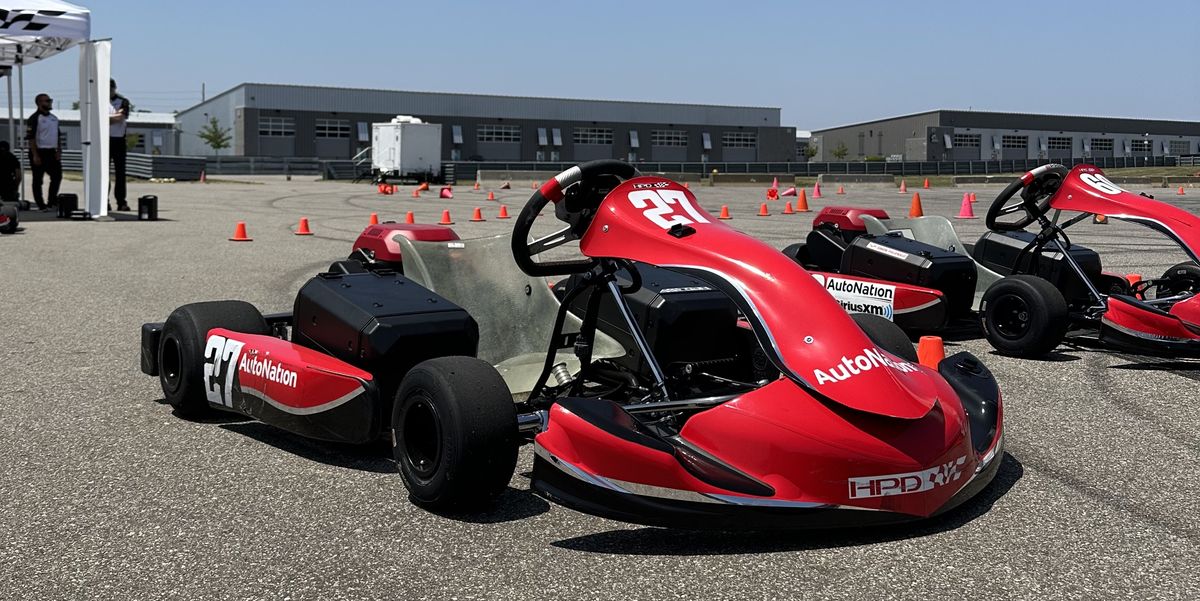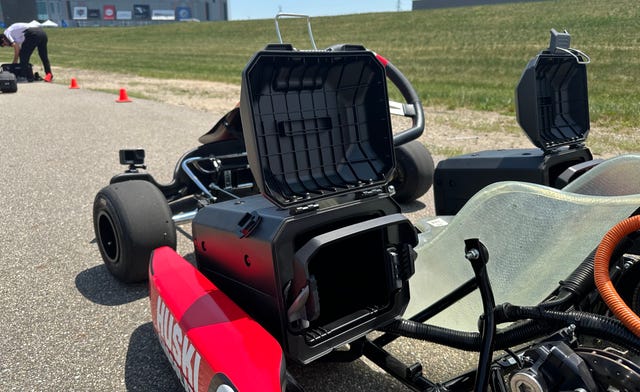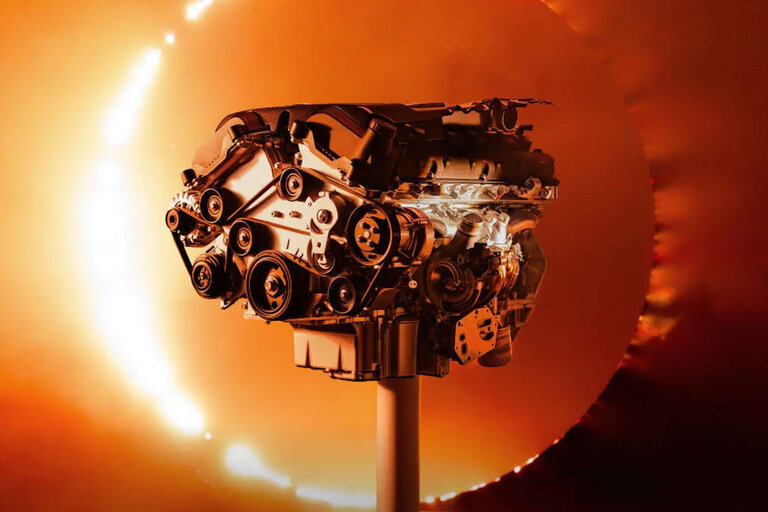
- The Honda eGX Racing Kart is a concept for now, but its greatest appeal is that it’s powered by two 1.3-kWh batteries that last for up to 45 minutes of flat-out driving and can be replaced in under 30 seconds.
- The single electric motor gives the eGX kart plenty of gusto, even if the batteries contribute to a 230-pound weight that makes it a bit heftier than comparable gas karts.
- The batteries take around five hours to charge, but the simple swapping procedure means that the fun doesn’t have to stop when the charge is depleted.
For most people, motorsports is prohibitively expensive. Even karting, the lowest rung on the ladder, is a costly exercise. But Honda’s latest experiment, the eGX Racing Kart, shows a new path that could make karting far more accessible, eliminating costly nonrenewable items and reducing overall maintenance requirements. The eGX Racing Kart is just a concept for now, but the electric vehicle’s swappable batteries hint at a new future for grassroots motorsports.
The eGX kart uses Honda’s Mobile Power Pack (MPP) batteries, which are designed to be easily replaceable. Measuring 11.7 inches by 6.2 inches by 7.0 inches, the MPPs are roughly the size of a two-slice toaster and weigh 22.7 pounds. Thanks to sturdily integrated handles, transporting the battery is a breeze. The MPP is already in use in Japan, where electric-moped riders can stop at stations to quickly swap out a depleted battery for a fresh one rather than wait for their bike to charge.
The approximately 50-volt batteries can each store 1.3 kWh and take about five hours to recharge. In the eGX, two MPP units are wired to operate in series, resulting in a more efficient system with less energy loss compared to batteries wired in parallel. Honda says the two batteries combine to provide 35 to 45 minutes of driving at a time.
If you want to stay on the track while the batteries recharge, swapping in new packs takes less than 30 seconds. Simply lift the plastic container lid, undo the locking mechanism by pulling up on the handle, and slide the battery out. The whole process is idiot-proof, with MPPs only fitting into the container one way and the locking mechanism making a audible click when the battery is correctly inserted.
We sampled the eGX Racing Kart during a recent event at Detroit’s M1 Concourse. The kart itself is a pretty standard affair, using a Parolin chassis with minor changes for new mountings. The eGX measures 77.9 inches long, 53.1 inches wide, and 23.2 inches tall, sans driver of course, and weighs 230 pounds, slightly heavier than a gas-powered shifter kart. The wheelbase stretches 41.3 inches long.
Power comes from a single motor mounted behind the driver’s seat, and although Honda wouldn’t disclose the output, the kart felt extremely zippy. The eGX tops out at about 45 mph, although the makeshift track we trialed them on didn’t have long enough straights to see that top speed. But the instant torque of the electric motor makes the eGX feel incredibly eager and responsive, and the surge of power doesn’t fall off as you keep the throttle pinned.
Otherwise, the eGX feels similar to other karts, with vast amounts of grip, tremendously heavy steering, and touchy braking thanks to a single 7.6-inch rear brake rotor, which can be used to rotate the kart through corners without scrubbing too much speed.
The real selling point of the eGX is its simplicity. By removing the internal-combustion engine and all of its accompanying fluids, the kart becomes virtually maintenance free. On the eGX, the only real consumable are the tires, as well as switching out the batteries after a 45 minute session. Of course, making the most of the swappable setup would require buying extra batteries. This could become a significant expense for someone who owns their own kart, although it would be a one-time cost. Honda remained tight-lipped about pricing for the battery units.
The bigger benefit would be for kart track owners, where the economies of scale could result in massive savings. Many locations already use electric karts that need to be parked each time they are charged, requiring a larger fleet so that there are always karts available to customers. But Honda’s setup would allow those karts to remain on track, bringing more smiles to patrons’ faces while the batteries charge on the side. Since the karts wouldn’t need to be taken out of the rotation for charging, the tracks could maintain smaller fleets. Combined with the minimal maintenance, the whole system could make rental kart businesses far more efficient.
Honda isn’t officially selling the eGX just yet, but we were told that the automaker is currently evaluating the business case for putting the kart into production. We envision the simplicity of the eGX’s battery swapping inspiring a new generation of racing drivers, and we hope that Honda can figure out how to make the eGX work financially. As the iconic Field of Dreams line goes, “If you build it, they will come.”
Associate News Editor
Caleb Miller began blogging about cars at 13 years old, and he realized his dream of writing for a car magazine after graduating from Carnegie Mellon University and joining the Car and Driver team. He loves quirky and obscure autos, aiming to one day own something bizarre like a Nissan S-Cargo, and is an avid motorsports fan.
#Hondas #eGX #Kart #Thrills #Glimpse #Auto #Racings #Future
Source link








